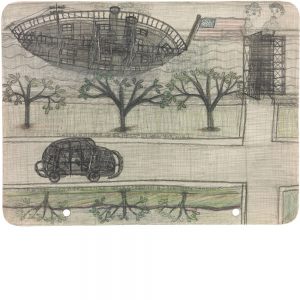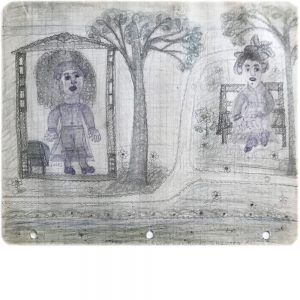Pearl Blauvelt
1893 to 1987, USA
Pearl Blauvelt’s ancestors emigrated from Holland to settle in the Hudson River Valley in New York State. Her family counted amongst the founders of the “First Dutch Reformed Church” dating to 1694.
Little is known about her life. Around 800 drawings by Pearl Blauvelt were discovered in an old wooden box during the renovation of a nineteenthcentury house in north-eastern Pennsylvania. The house had been uninhabited for nearly 50 years. There was no running water, no electricity and no central heating. Pearl Blauvelt had lived there from the early 20th century until the 1950s. The town’s residents called her the “village witch”. After it became clear she could no longer live on her own without assistance, she moved to a residential care home, where she remained until her death. Some time later, New York artists stumbled on her drawings. She was the subject of a portrait in Raw Vision in 2002. Its authors, Donna and Dennis Corrigan, describe Pearl Blauvelt’s drawings to be a chronicle of her private life. They consider them to be innocent, Victorian memoirs of everyday life or reflections of needs experienced by a woman who remained an outsider to society. The subjects of these drawings, which were presumably made in the 1940s, include articles of clothing, furniture, people, bank notes and landscapes drawn from her life experiences. She used lined notebook paper, envelopes and paper bags for her delicate pencil and coloured pencil drawings.
Her works can be found at MoMA in New York, in The Museum of Everything and in the collection of Gerhard and Karin Dammann, Switzerland. As of 2021, Pearl Blauvelt has also been represented in the 921 works of the “Donation d'Art Brut de Bruno Decharme” at the Centre Pompidou in Paris.
Selected works




